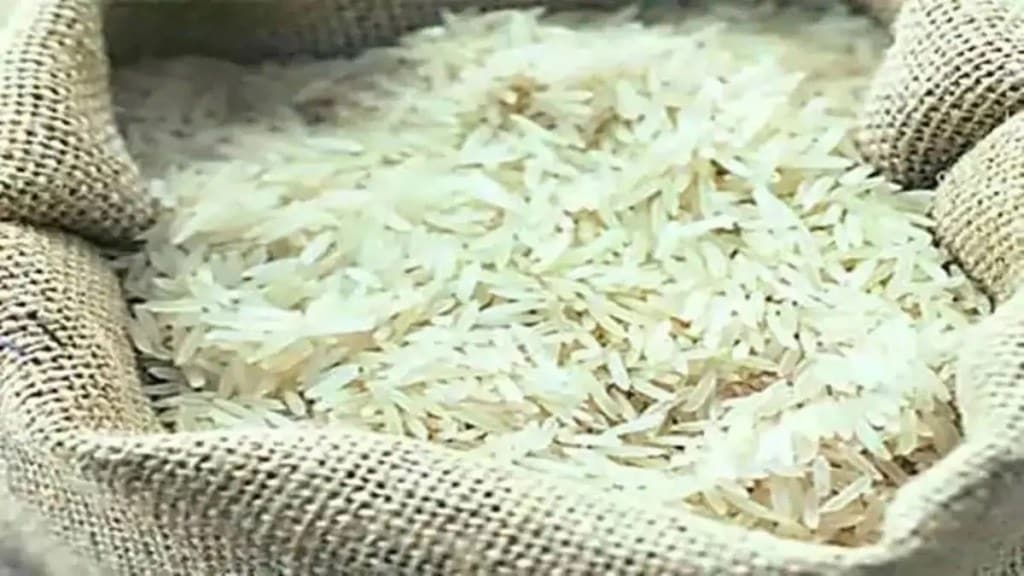Rice stocks in the central pool will plunge below the buffer for the first time in at least two decades by the end of this financial year, if the free ration scheme – Pradhan Mantri Garib Kalyan Anna Yojana (PMGKAY) – is extended for the seventh time to the October-March FY23 period, a senior food ministry official said. The stocks in that case will be 12-13 million tonne (MT) by April 1, 2023 below the buffer of 13.58 MT for that time, he added.
“If PMGKAY extended by another six months (from October), there would be no rice stocks left to be sold through open market sale scheme or to meet the grain requirement under the ethanol blending programme and other exigencies,” the official said.
Extension of the scheme will also reduce wheat stocks in the central pool as on April 1, 2023 to 9-9.3 MT against the buffer of 7.4 MT.
The sixth phase of PMGKAY implementation ends on September 30. Sources said that the Cabinet will decide on whether to extend the scheme any further soon.
Also Read: India Inc’s overseas direct investment drops 59 pc at USD 1.03 bn in Aug: RBI data
In addition to the requirement of additional foodgrain, running the scheme for October-March FY23 with the current grain composition will cost the exchequer a massive `90,000 crore, if not higher. This will be reflected in the food subsidy expenses, the ministry had said in an internal note, reviewed by FE earlier.
The government expenditure on the PMGKAY is likely to cross `3.16 trillion since its roll-out in April, 2020, sources said.
Earlier, the expenditure department of the finance ministry, too, had expressed concern over the high budgetary cost of the free ration scheme and argued against extending it beyond September.
When the free ration scheme was extended for the April-September period of the current financial year, the government estimated its cost at `80,000 crore. But, due to lower wheat stocks, rice component of the scheme was enhanced by 80%, effective May. This led to an additional cost of over Rs 5,000 crore given that ‘economic cost’ is higher than that of wheat.
Since the open-ended procurement of grains started in 2013-14 under the National Food Security Act (NFSA), food stocks haven’t fallen below the buffer levels. The actual rice stocks haven’t plunged below the buffer requirement at least since 2000 while depletion of wheat stocks led to imports in 2006.
Meanwhile, on September 1, wheat stocks in the central pool stood at 24.8 MT against the buffer norm of 20.5 MT (for October 1), the lowest since 2008.
However, rice stocks as on September 1, with the FCI were a comfortable 24.4 MT. Rice stock could fall to 20 MT by October 1, still nearly double the buffer requirement of 10.2 MT. Current stocks exclude more than 10 MT of rice yet to be received from millers.
The buffer norm includes operational stocks and strategic reserves.
Officials said that depletion in wheat stock attributed to a more than 56% drop in procurement in the current rabi season to only 18.8 MT against 43 MT purchased by FCI and agencies in the 2021-22 season (April-June) because of lower production. Similarly, because of deficient monsoon rains in some of the key rice growing states – West Bengal, Bihar, Uttar Pradesh and Jharkhand, rice production in the current kharif season is likely to decline and could impact the government’s procurement drive of rice which officially commences on October 1.
Launched in April 2020 as part of the Covid-19 relief measures, 5 kg of grains are distributed free under PMGKAY to more than 800 million beneficiaries every month free of cost. Additionally, these people also get an equal quantity of highly subsidised foodgrains under the NFSA.
Initially, the scheme was implemented for three months April-June, 2020 (phase-I), which was extended during July- November 2020 (phase-II). Then the scheme was reintroduced during May-June 2021 (phase-III) and extended during July-November 2021 (phase-IV). Subsequently, PMGKAY was extended twice during December, 2021 – March 2022 (phase-V) and April – September 2022 (phase VI).

